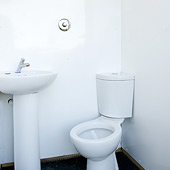Rooks Bookkeeping A Guide to Construction Bookkeeping for
However, smaller companies or those with shorter projects may prefer the completed contract method for its simplicity. Improper tracking of payments can lead to compliance issues and inaccurate job costing. Implement systems to accurately track and report all payments to employees and contractors.
- The construction industry is unique in many ways, including the high price of contracts and length of projects.
- So they need to be able to track accurate costs, bid on jobs, manage prevailing wage requirements, and handle a slew of other accounting responsibilities.
- Set limits, turn tracked time into automated timesheets, and send invoices with Hubstaff.
- To maintain a positive financial position, you’ll want to use progressive billings (aka progress billings).
- It also helps contractors decide whether to recognize book revenue at a particular time (such as CCM) or over some time (such as PCM).
- However, construction accounting should consider every construction project as its short-term profit center having inputs and requirements.
Revenue Recognition Methods in Construction
Construction companies have specific tax obligations that they need to comply with. Therefore, it is essential for construction companies to keep accurate records of all financial transactions and to file their taxes on time. In addition to payroll, construction companies must also manage a wide range of expenses. This includes everything from materials and equipment to subcontractor payments and travel expenses.
Bookkeeping for Construction Companies: The Ultimate Guide
Apart from these, the accounts payable aging report should consist of the vendor’s name and payment terms. As is often the case in construction, workers have to switch between job sites in multiple states and cities. In turn, this allows employees to have multiple tax withholdings on a single payroll.
Billing method #4: AIA progress billing
One positive aspect of the cash method is that it provides an accurate representation of cash flow. As a result, this leads to accountants not having to keep tabs on what has been paid and what hasn’t. Revenue recognition is how construction contractors collect financial means for their business.
- With unit price, risk tends to be shared between the contractor and customer since production quantities can end up higher than estimated.
- It combines all job costing data in one place, offering an accurate representation of each job’s current status and your business’s overall financial health.
- Most of the time, this isn’t a huge problem — until too many changes pile up.
- While it draws on all the same basic principles of traditional accounting, it also has several important and distinct features.
According to the Construction Financial Management Association, pre-tax net profits average between just 1.4% and 3.5% for contractors and subcontractors. Just as you have project managers overseeing each job site, it might make sense to hire a professional accountant to help you reconcile a variety of transactions for various jobs and services. The first step for all construction firms is to open a separate business bank account that will be used exclusively for your business. Rippling helps increase savings, automate busy work, and make better decisions by managing payroll, HR, IT, and spend in one place. Construction companies can use historical data to estimate their costs and create a budget for each project. They can also use forecasting techniques to predict future costs and adjust their budgets accordingly.
Overall, the profit and loss report helps construction businesses learn where profits are coming from and manage costs efficiently. To tackle this problem, construction contractors must check with the workers’ local union business manager to find out about requirements for paying union contributions. Not doing so could lead to costly non-payment consequences, potentially resulting in a legal seizure of property to satisfy a tax debt (also known as a levy). One of the most popular billing methods, fixed-price billing, is based on a detailed estimate that provides the total cost of a project.
Billing method #3: Unit-price billing
Many industries operate around fixed-price, point-of-sale billing, but that’s not always the case with construction. Because construction production is project-based, decentralized and long-term, contractors may use a wide range of billing styles and methods. Often, specialized software is required to track and create those billings.
Implement percentage-of-completion accounting
Although it’s sometimes challenging, you can significantly simplify bookkeeping by hiring a bookkeeper or accountant to handle it for you. Any bookkeeping solution you choose should have How Construction Bookkeeping Services Can Streamline Your Projects these core features at a minimum. If your business has any unique bookkeeping needs, you’ll want to look for a solution that caters to those needs as well. Hiring an accountant to take care of your bookkeeping can save you a significant amount of time, as well as eliminate bookkeeping and accounting errors.
Never chase timesheets again with Hubstaff
Based on the work completed so far, there is a need to maintain multiple payment schedules throughout the contract period. In addition, work is usually seasonal, and it is often difficult to predict when new work will appear. Reasonable margins and deductions should be assigned to https://www.merchantcircle.com/blogs/raheemhanan-deltona-fl/2024/12/How-Construction-Bookkeeping-Services-Can-Streamline-Your-Projects/2874359 the correct local level and reported accordingly. The reporting requirements for a particular partnership may be national or local.


























